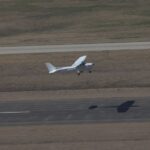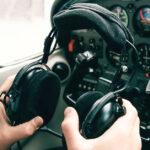By: Steven Daun, National Chief Pilot
I’m always amused when I hear someone ask another person if they are ready to go flying. If you ask 1,000 pilots to define “ready,” you are bound to get 1,000 different answers. The proper statement should be, “tell me why you are ready to go flying.” What have you done to prepare for your flight?
Am I seriously asking this question? Yes, I really am. I’m asking it because we still see so many pilots taking off into conditions that they are ill-prepared for or didn’t anticipate.
What should the term “Ready to Fly” include?
1) You are ready to fly. You’ve gone through the IMSAFE checklist and have determined that you personally, as the pilot, are fit to fly. You also need to include that you are legal to fly. This pertains to your BFR, IPC, Night, IFR and Landing Currency.
2) Your passengers are ready to fly. They are in a stable state and are able to handle the conditions that you are about to fly in. You need to consider the outside air temperature, turbulence, clouds, and traffic. Are any of those likely to cause stress in the passenger(s)? If so, what is the most likely way that stress will manifest itself in the airplane? This should be discussed with your passenger(s) prior to making this determination.
3) Airspace and restrictions are ready to receive your flight. TFRs still remain one of the largest pilot violation areas. It doesn’t matter how much of a rush you are in, take the time to check the TFRs along your route. You should also take the time to see if any of the restricted airspace, military training routes, or military operations areas are active. Both of these will take you less than five minutes and could save you a great deal of agony later.
4) Weather and environment are within your capabilities, the aircraft capabilities and most importantly, within your passenger’s capabilities. We are making the assumption that if you are going to fly into any type of weather, you are qualified to do so, and so is your aircraft. However, we often forget to check if our passengers are ready. This conversation should include a description of the current conditions, as well as what they will see, hear and feel during the flight. If this creates some anxiety, that should be discussed prior to walking out to the airplane.
5) Weight and balance is another area that is often taken for granted. Many pilots consider this one and the same. In reality, they are two different considerations. Weight concerns how much the airplane weighs and will weigh after a period of time. Balance changes with the number of passengers, their weight and position, cargo and its weight as well as its location(s) and don’t forget about your fuel burn. If you regularly fly with one or no passengers and then add someone to the back seat, you must take the new balance considerations into account. Failure to do so could
result in a stall, tail strike or other unexpected incidents.
6) Aircraft and equipment include your ability to operate the aircraft and equipment, as well as the operating condition of both. Have you flown this airplane or, one similar, and are you comfortable with the avionics and equipment in the airplane? If not, you may want to spend some time studying both. You may also want to consider spending a few hours flying the aircraft in VFR before going into the clouds.
7) Everything else. FAR §91.103 refers to Preflight action. This regulation starts out by saying that “each pilot in command shall, before beginning a flight, become familiar with all available information concerning that flight.” This includes all of the items listed in #1 through #6 above.
Before you go flying, take a minute and stop what you are doing. Make sure that you have checked yourself, the aircraft, your passengers, the route, the weight, and balance and that you received a standard briefing to include NOTAMs. You may even want to consider developing a checklist that you review prior to making your decision to go fly. Whatever you do, don’t fall into the trap of “I’ve done this a hundred times.”










